Navigating the Mortgage Application Process
Navigating the mortgage application process can be a complex and overwhelming experience, especially for first-time homebuyers. Understanding each step and knowing what to expect can help you manage the process more smoothly and confidently. This blog will guide you through the essential steps of the mortgage application process, from preparing your finances to closing on your new home.
Preparing Your Finances
Before you start the mortgage application process, it’s crucial to get your finances in order. This will not only make the application process smoother but also increase your chances of securing a favorable mortgage. Here are some steps to help you prepare:
- Review Your Credit Report: Obtain a copy of your credit report from the major credit bureaus (Equifax, Experian, and TransUnion). Check for any errors or discrepancies and address them promptly. A higher credit score can lead to better mortgage terms and lower interest rates.
- Save for a Down Payment: Depending on the type of mortgage, you may need a down payment ranging from 3% to 20% of the home’s purchase price. Start saving early to ensure you have enough funds when you’re ready to buy.
- Calculate Your Budget: Determine how much you can afford to spend on a home. Consider all associated costs, including property taxes, homeowners insurance, and maintenance expenses. A common rule of thumb is that your mortgage payment should not exceed 28% of your gross monthly income.
- Reduce Debt: Lenders will look at your debt-to-income ratio (DTI) to assess your ability to manage monthly payments. Paying down existing debts can improve your DTI and make you a more attractive borrower.
Choosing the Right Mortgage
There are various types of mortgage loans available, each with its own requirements and benefits. It’s essential to understand your options to choose the right mortgage for your financial situation:
- Conventional Loans: These are standard mortgages that are not insured or guaranteed by the federal government. They typically require a higher credit score and a larger down payment.
- FHA Loans: Insured by the Federal Housing Administration, these loans are popular among first-time homebuyers because they allow for lower down payments and more flexible credit requirements.
- VA Loans: Available to eligible veterans and active-duty service members, VA loans are guaranteed by the Department of Veterans Affairs and often require no down payment.
- USDA Loans: These loans are designed for rural homebuyers and are backed by the U.S. Department of Agriculture. They offer low interest rates and may require no down payment.
Getting Pre-Approved
Getting pre-approved for a mortgage is a critical step in the homebuying process. It shows sellers that you are a serious buyer with the financial backing to purchase a home. Here’s what you need to do:
- Gather Financial Documents: Lenders will require various documents, including pay stubs, tax returns, bank statements, and employment verification. Having these documents ready will speed up the pre-approval process.
- Shop Around for Lenders: Compare rates and terms from multiple lenders to ensure you get the best deal. Consider working with a mortgage broker who can help you find competitive rates.
- Complete the Pre-Approval Application: Fill out the pre-approval application with your chosen lender. They will review your financial information and provide a pre-approval letter stating how much you can borrow.
Finding Your Home
With a pre-approval letter in hand, you can start your home search with confidence. Work with a knowledgeable real estate agent to find properties that meet your criteria. Once you find a home you like, make an offer and negotiate the terms with the seller.
Completing the Mortgage Application
After your offer is accepted, it’s time to complete the full mortgage application. Here are the steps involved:
- Provide Additional Documentation: Your lender may request more detailed financial information, such as proof of assets, additional income verification, and details about your employment history.
- Order a Home Appraisal: The lender will order an appraisal to determine the market value of the property. This ensures that the loan amount does not exceed the home’s value.
- Underwriting Process: The lender’s underwriting team will review your application, financial documents, and the appraisal report to assess your eligibility for the mortgage. This step can take several weeks.
Loan Approval and Closing
Once your mortgage application is approved, you’re in the final stretch. Here’s what to expect:
- Review the Loan Estimate: The lender will provide a Loan Estimate, detailing the loan terms, interest rate, monthly payments, and closing costs. Review this document carefully and ask any questions you may have.
- Final Walk-Through: Before closing, schedule a final walk-through of the property to ensure it is in the agreed-upon condition and that any requested repairs have been completed.
- Closing Disclosure: A few days before closing, you will receive a Closing Disclosure, which outlines the final loan terms and costs. Review this document to ensure there are no surprises.
- Closing Day: On closing day, you will sign all the necessary documents, including the mortgage agreement and the deed. You will also pay the closing costs, which can include fees for the loan origination, appraisal, title insurance, and more. Once everything is signed and the funds are transferred, you will receive the keys to your new home.
Tips for a Smooth Mortgage Application Process
Navigating the mortgage application process can be complex, but here are some additional tips to help you along the way:
- Stay Organized: Keep all your financial documents and correspondence with your lender organized. This will make it easier to provide information quickly when requested.
- Communicate with Your Lender: Maintain open communication with your lender throughout the process. Respond promptly to requests for information and ask questions if you are unsure about any part of the process.
- Avoid Major Financial Changes: During the mortgage application process, avoid making significant financial changes, such as changing jobs, making large purchases, or opening new credit accounts. These changes can affect your credit score and your eligibility for the loan.
- Consider Locking in Your Interest Rate: Interest rates can fluctuate, so consider locking in your rate with your lender to protect yourself from potential increases before closing.
- Be Patient: The mortgage application process can take time, and there may be delays along the way. Stay patient and keep your end goal in mind—owning your new home.
Navigating the mortgage application process can be challenging, but with the right preparation and understanding, you can move through it confidently. By preparing your finances, choosing the right mortgage, getting pre-approved, finding your home, completing the application, and closing the deal, you’ll be well on your way to homeownership. Remember to stay organized, communicate with your lender, and be patient throughout the process. With these tips, you can make the journey to owning your first home a smooth and successful one.








